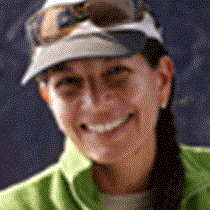Southern Isabela Island
Isabela, the largest island in the Galápagos group, was created by the fusion of six enormous shield volcanoes, which give rise to the characteristic “seahorse” shape of the island.
After a good night anchored off Punta Espinoza, Fernandina, and just before first light we navigated about 20 nm across the Bolivar Channel to Urbina Bay.
At the base of the majestic Alcedo Volcano, we came here to visit an area which is of great geological and historical interest. In 1954, one-and-a-half square kilometers of the marine reef off the coast of Urbina was uplifted by as much as 4 meters/13 feet! Many marine creatures were left high and dry along the coastline trail. Lava rocks incrusted with barnacles, tubular worms, many shells of crustaceans and huge white corals heads are some evidence of this occurrence 56 years ago.
The long hike of about 3.2 kilometers/2 miles in distance, took us along the magnificent and almost surreal coastline. We saw sea turtles and flightless cormorants enjoying the nutrient-rich waters. Once inland, the air temperature increased, and in the middle of this unique and strange dry forest with white coral trails, we spotted some colorful land iguanas and a juvenile giant tortoise that was hidden underneath a poison apple tree.
Colorful flowers of the Galápagos cotton were a feast for the carpenter bees and the Cordia lutea bushes were full of juicy white berries.
As we neared the end of the trail, the ship called us by radio to let us know that a pod of dolphins was out there near the coast. We rushed to the Zodiacs and immediately after we were surrounded by a pod of bottlenose dolphins that seemed completely unconcerned by our presence.
After taking hundreds of photos, we knew a Peruvian buffet lunch was waiting for us, so in a true contentment we returned to the ship. Prior to and during lunch, we navigated south to a prominent point between Sierra Negra and Cerro Azul volcanoes, Punta Moreno. These 2 shield volcanoes, still active, make up Southern Isabela.
Once at Punta Moreno, some of us went for a long hike across the broken lava flows, and others took a Zodiac cruise along the rough coastline. The “lava hikers” wearing our best shoes (meaning flip-flops for us, the Naturalists) went in search of several small, hidden, brackish water lagoons, like green oasis in the middle of the black lava flow, home to a variety of shorebirds and the colorful and rare Greater flamingoes, a subspecies of the ones found in the Caribbean region.
Lava cacti, Scalesia shrubs, Mollugo plants and some other endemic species such as the Macraea laricifolia and the Darwiniothamnus tenuifolious are worth seeing here.
Once in the Zodiacs we explored many of the protected bays and inlets along this dramatic lava coastline, where huge marine iguanas, rays and a couple of flightless cormorants with juveniles were the highlight of the afternoon.




